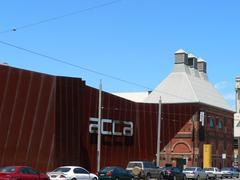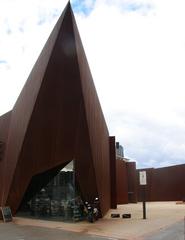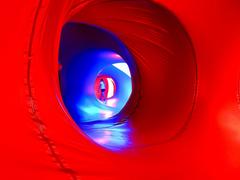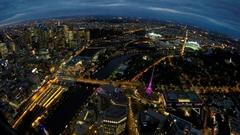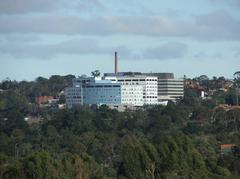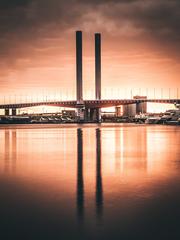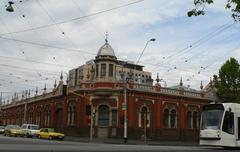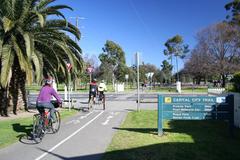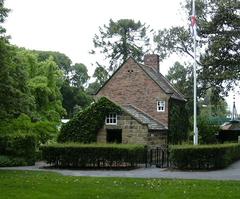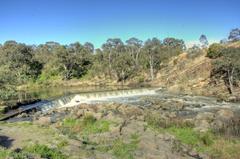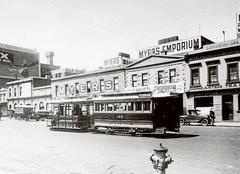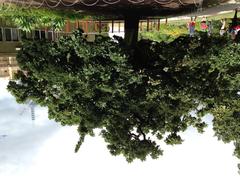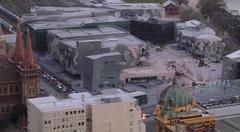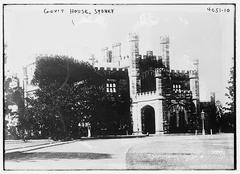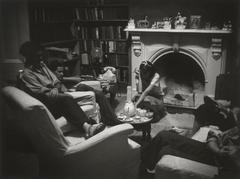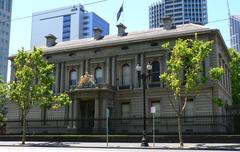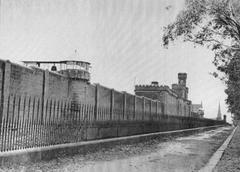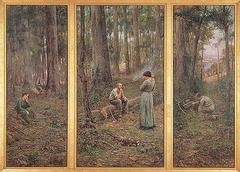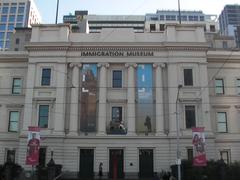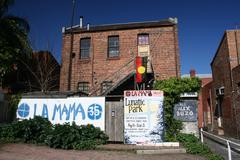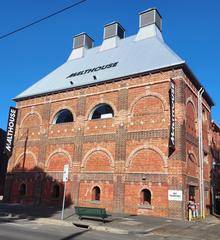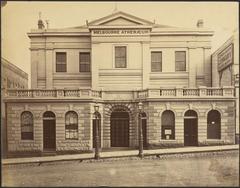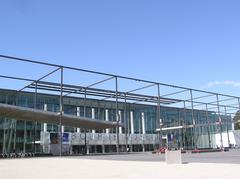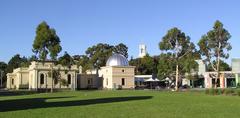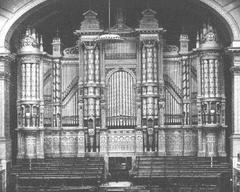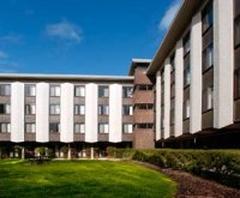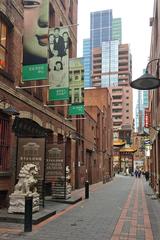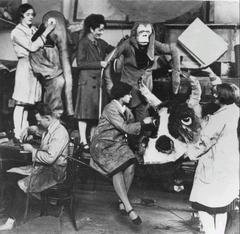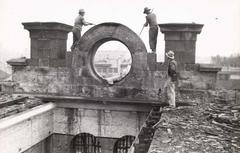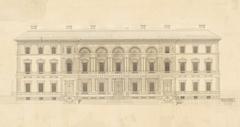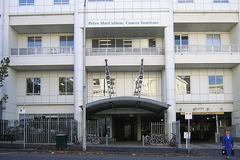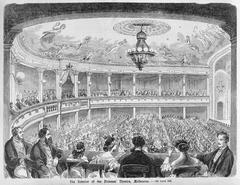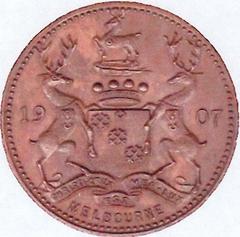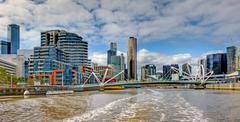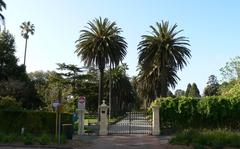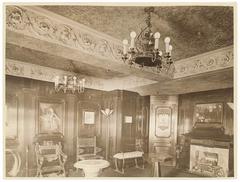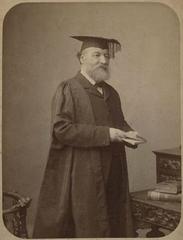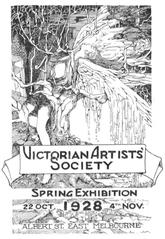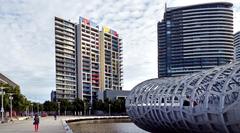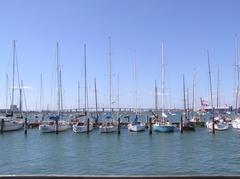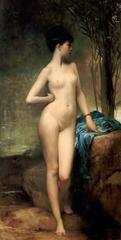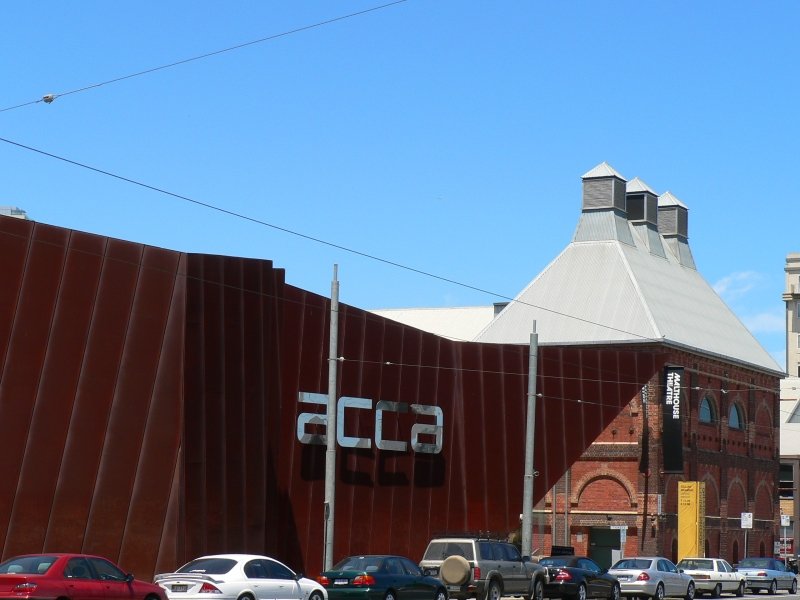
Australian Centre for Contemporary Art (ACCA) Melbourne: Visiting Hours, Tickets, and Attractions Guide
Date: 14/06/2025
Introduction
The Australian Centre for Contemporary Art (ACCA) is an essential destination for anyone interested in the evolving world of contemporary art. Nestled in Melbourne’s Arts Precinct, ACCA combines striking architecture with a commitment to cutting-edge exhibitions, inclusivity, and community engagement. This guide delivers everything you need to know for planning your visit, from hours and ticketing to accessibility, programming, and nearby cultural attractions. Whether you are a seasoned art lover or a first-time visitor, ACCA offers an enriching cultural experience at the heart of Melbourne.
Table of Contents
- Overview and Significance
- History and Mission
- Architectural Highlights
- Visiting Information
- Exhibitions and Programming
- Public Events and Community Engagement
- Visitor Facilities and Services
- Inclusivity and Accessibility Initiatives
- Nearby Attractions
- Sustainability at ACCA
- FAQs
- Visual & Digital Resources
- Key Tips and Summary
- References
Overview and Significance
Since its founding in 1983, ACCA has been a beacon for contemporary art in Australia, championing experimental and thought-provoking exhibitions that connect local and international artists with diverse audiences. Its relocation in 2002 to a purpose-built, award-winning building by Wood Marsh architects cemented its status as a Melbourne icon, both as a gallery and as a site of architectural marvel (ACCA Project Manager PD, 2022; ArchDaily, 2011). ACCA’s role extends beyond exhibitions: it is a centre for education, innovation, and dialogue within Melbourne’s thriving arts scene (Visit Melbourne, 2025).
History and Mission
Founding and Growth
ACCA began as a modest initiative and has grown into a leading platform for contemporary art. Its mission is to support new and established artists, foster critical dialogue, and engage the public through diverse programming. The 2002 move to Southbank’s Arts Precinct was a turning point, enabling expanded exhibitions and outreach (ACCA Project Manager PD, 2022).
Programming and Community
ACCA curates major annual exhibitions, commissions ambitious new works, and actively collaborates with artists and communities. Initiatives such as “ACCA Beyond Walls” take art into public spaces, while educational workshops and public programs make contemporary art accessible to all.
Architectural Highlights
Design and Form
The Wood Marsh-designed building features a weathered Corten steel façade, evoking both industrial heritage and the Australian landscape. Its flexible, light-filled galleries support large-scale installations and innovative presentations, while public spaces foster interaction and engagement (ArchDaily, 2011).
Recognition
ACCA’s building is widely recognized as a landmark of contemporary museum architecture, drawing visitors interested in both art and design.
Visiting Information
Hours
- Tuesday–Friday: 10:00 am – 5:00 pm
- Saturday–Sunday: 11:00 am – 5:00 pm
- Monday: Closed (open by appointment only)
- Check for special extended hours during festivals or major events (ACCA Visit).
Tickets
- General admission: Free
- Special events/talks: May require paid tickets or registration; see official ACCA website for details.
Accessibility
- Fully wheelchair accessible with step-free entry, wide galleries, accessible toilets, and designated parking.
- Assisted listening devices for talks and events.
- Assistance animals are welcome.
- Digital resources and virtual programs via the ACCA Digital Wing.
Location & Directions
- Address: 111 Sturt Street, Southbank, VIC 3006, Melbourne, Australia
- Access: Easily reached by tram (routes 1, 12, 58, 96), bus, and a short walk from Flinders Street Station.
- Parking: Limited street parking; public garages at Arts Centre Melbourne and Australian Ballet Centre.
Exhibitions and Programming
Exhibition Approach
ACCA operates as a kunsthalle, presenting a rotating schedule of temporary exhibitions—often featuring newly commissioned, site-specific, and experimental works. The curatorial team works closely with artists and curators to address urgent social, cultural, and political issues (ACCA Exhibitions).
Recent Highlights
- From the other side: A tribute to art critic Paul Taylor, featuring works from his collection (Art Club 2025).
- Mark Chu: Eat With Our Eyes: Examining Melbourne’s food culture (What’s On Melbourne).
- Annual Commissions: Major new works by Australian artists, supporting ambitious projects.
Public Programming
- Free guided tours every Sunday during exhibition periods.
- Art Club: Membership program with exclusive events, tours, and talks (Art Club 2025).
- Talks, panels, and workshops: Engage with artists, curators, and thinkers.
- Special events and collaborations: Partnerships with major Melbourne festivals (Visit Melbourne, 2025).
Visitor Facilities and Services
- Bookshop: Exhibition catalogues, art books, and unique gifts.
- Onsite café: Refreshments in a relaxed environment.
- Restrooms: Accessible facilities near the entrance.
- Free Wi-Fi throughout the centre.
- Family-friendly programming and amenities.
Inclusivity and Accessibility Initiatives
Commitment to All Visitors
- Step-free access, accessible restrooms, and support for sensory/cognitive needs.
- Clear wayfinding and exhibition texts for cognitive accessibility.
- Staff trained to assist visitors with diverse needs.
First Nations Engagement
- Acknowledges the Wurundjeri Woi-wurrung and Bunurong/Boon Wurrung peoples of the Kulin Nation as Traditional Owners.
- Regular programming featuring First Nations artists and perspectives.
Multilingual and Multicultural Access
- Assistance for non-English speakers; select materials available in multiple languages.
Nearby Attractions
- National Gallery of Victoria (NGV): Australia’s leading art museum.
- Malthouse Theatre: Contemporary performing arts.
- Arts Centre Melbourne (Melbourne Arts Precinct): Iconic spire and diverse arts programming.
- Yarra River promenade, Southbank eateries, and public art installations.
Sustainability at ACCA
ACCA integrates sustainability in operations and programming, including recycling, support for public transport, and exhibitions addressing environmental themes (e.g., 2025’s The Charge That Binds).
Frequently Asked Questions (FAQ)
What are ACCA’s visiting hours?
Tuesday–Friday: 10:00 am–5:00 pm; Saturday–Sunday: 11:00 am–5:00 pm; closed Mondays.
Is admission free?
Yes, general admission is free. Some special programs may require tickets.
Is ACCA accessible?
Yes, with wheelchair access, accessible toilets, and support for other needs.
Are there guided tours?
Free public tours every Sunday; group tours by appointment.
Can I take photographs?
Non-flash photography is allowed in most areas unless otherwise indicated.
How do I get there?
Easy access by tram, bus, and train; parking available nearby.
Are assistance animals welcome?
Yes, accredited assistance animals are welcome.
Visual & Digital Resources
- High-quality images of ACCA’s exterior, exhibitions, and public events (with descriptive alt text for SEO).
- Virtual tours and online exhibitions via the Digital Wing.
- Maps showing ACCA’s location and nearby attractions.
Key Tips and Summary
- Plan ahead: Check ACCA’s website for current exhibitions and events.
- Weekdays are quieter; weekends may offer extra programming.
- Use public transport for convenience and sustainability.
- Explore nearby attractions to enrich your visit.
- Follow ACCA on social media for updates and behind-the-scenes content.
- Download the Audiala app for personalized art guides and exclusive content.
ACCA represents the dynamic pulse of contemporary art in Melbourne—a free, accessible, and inspiring destination for all.
References
- ACCA Project Manager PD, 2022
- ArchDaily, 2011
- Visit Melbourne, 2025
- ACCA About
- ACCA Visit
- ACCA Accessibility
- Art Club 2025
- What’s On Melbourne, June 2025
- National Gallery of Victoria
- Melbourne Arts Precinct
